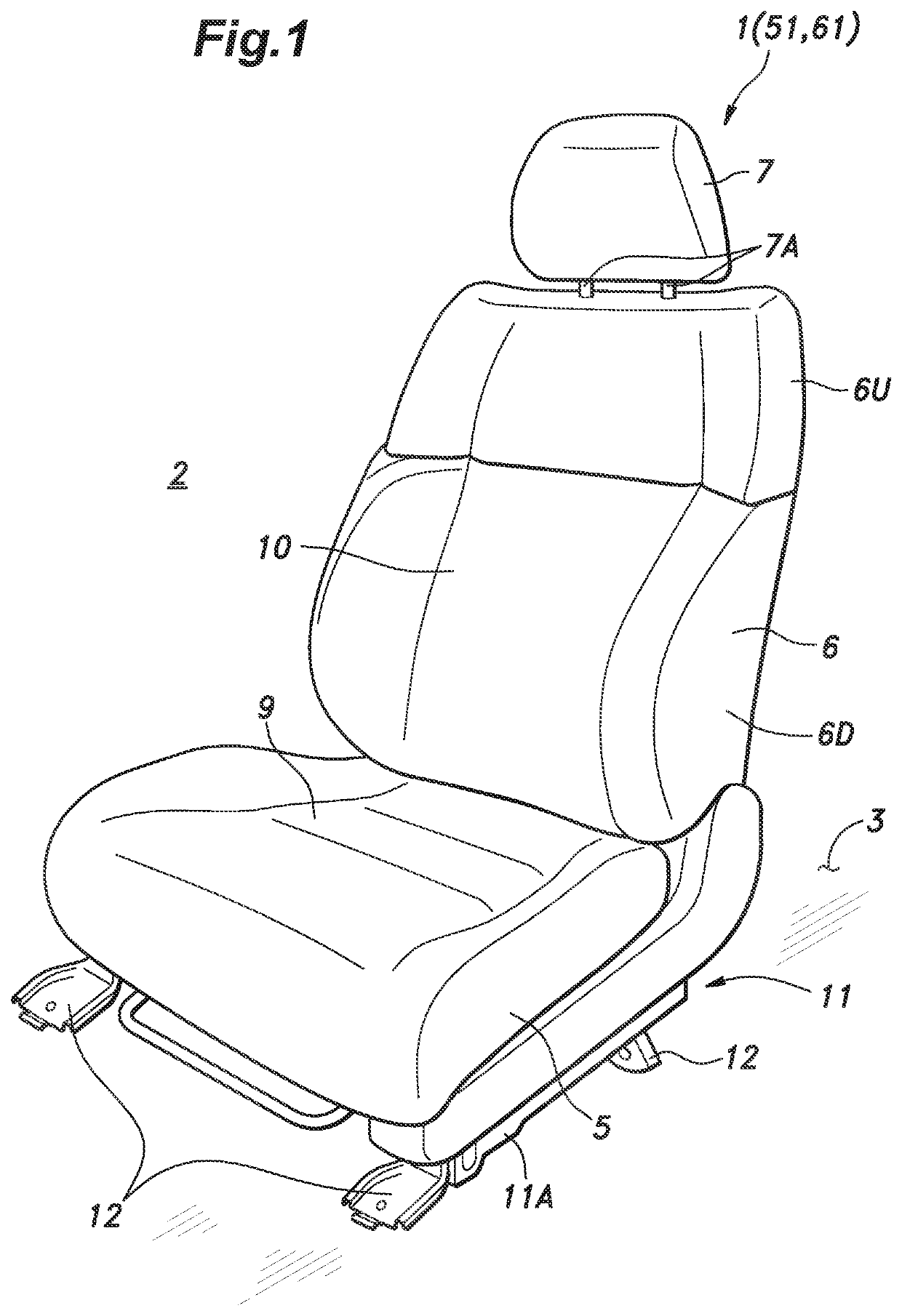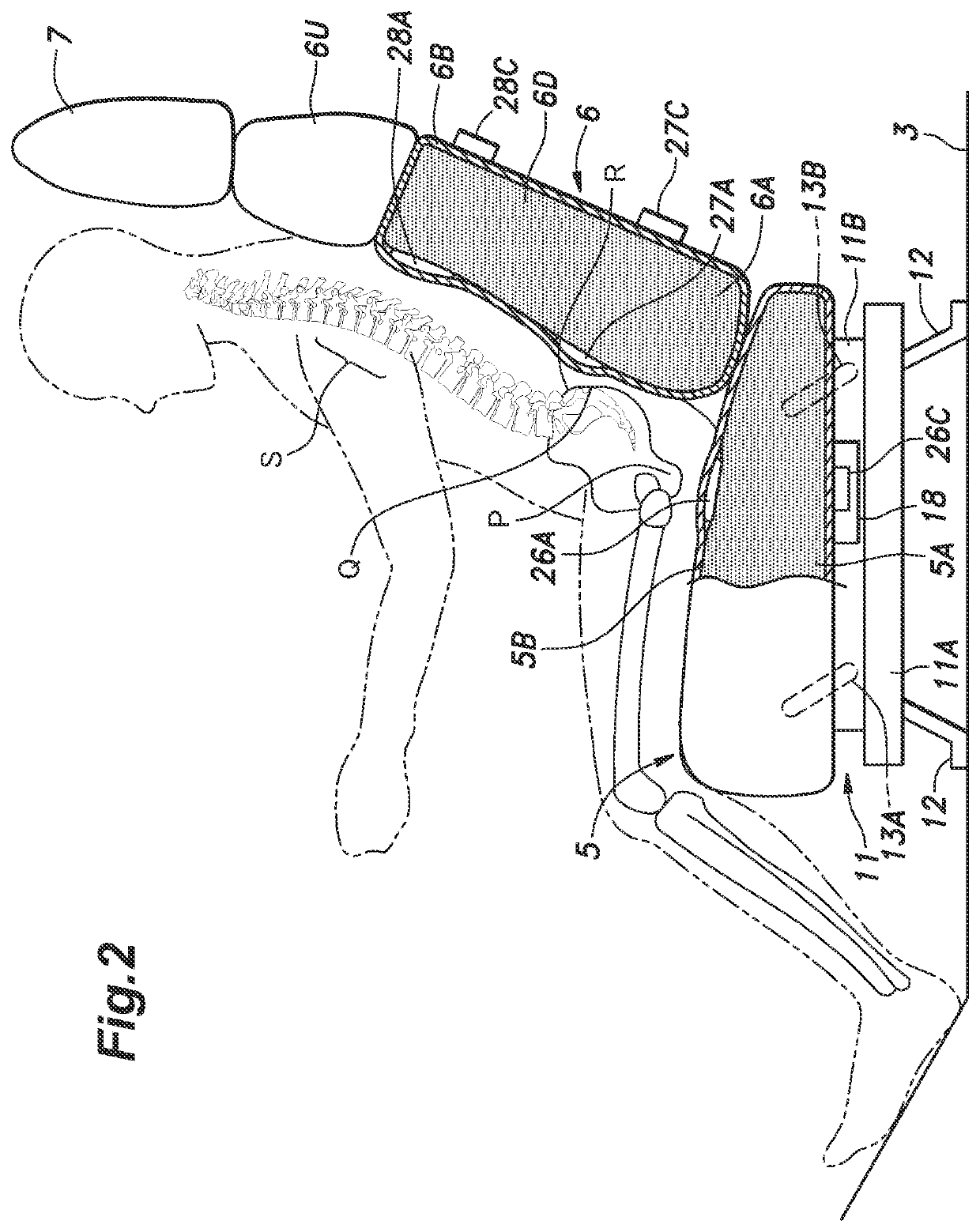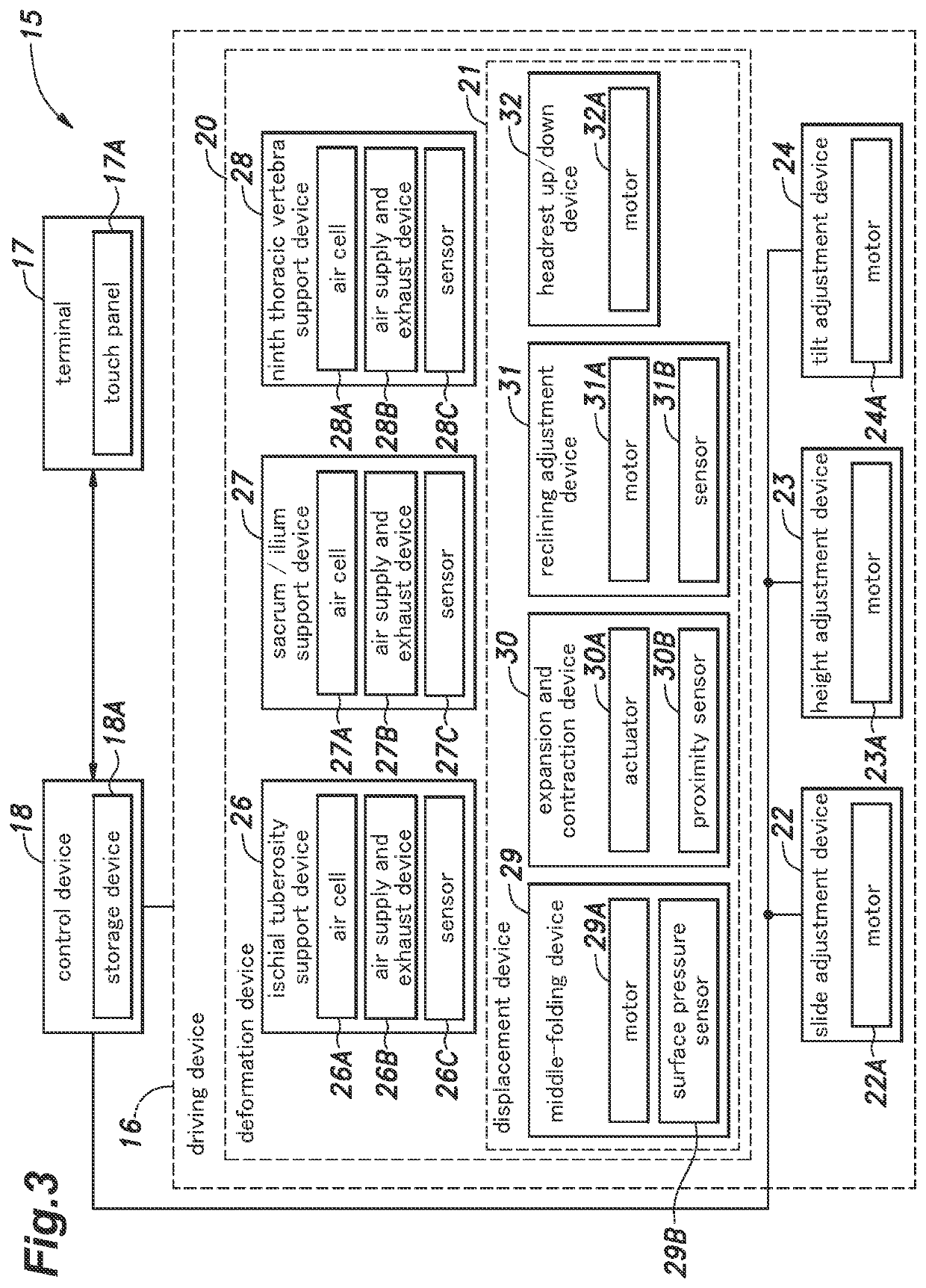Vehicle seat and vehicle provided with vehicle seat
a technology for vehicle seats and seats, which is applied in the direction of back rests, vehicle components, vehicle arrangements, etc., can solve the problems of not being able to easily deform and/or move the vehicle seat, and achieve the effects of reducing fatigue, increasing internal pressure, and less likely to induce fatigu
- Summary
- Abstract
- Description
- Claims
- Application Information
AI Technical Summary
Benefits of technology
Problems solved by technology
Method used
Image
Examples
second embodiment
[0093]A vehicle seat 51 according to the second embodiment differs from the vehicle seat 1 according to the first embodiment with regard to the reception process, and the other configuration is the same and thus the description thereof will be omitted,
[0094]As with the first embodiment, the terminal 17 starts the reception process when there is a prescribed input to the touch panel 17A. In the reception process, the terminal 17 displays a reception area 52 for receiving input of the height, the weight, and the corresponding body type group from the seated person. In this embodiment, the terminal 17 may display the reception area 52 as selection fields 52C (pulldown lists) enabling the seated person to select the range to which the height belongs, the range to which the weight belongs, and the body type group to which the seated person considers he / she belongs (see FIG. 7). Also, as with the first embodiment, the terminal 17 displays the proceed button 41 on the touch panel 17A toget...
third embodiment
[0098]A vehicle seat 61 according to the third embodiment differs from the first embodiment in that the terminal 17 displays, in the reception process, a reception area. 40 for receiving input of the information regarding the seating posture in addition to the height and the weight. Also, the third embodiment differs from the first embodiment in that the storage device 18A stores a correction table in addition to the table same as in the first embodiment. Furthermore, the third embodiment differs from the first embodiment in that the control device 18 calculates the various parameters of the driving devices 16 based on the information regarding the seating posture in addition to the information regarding the height, the weight, and the body type, namely, step ST3 differs. In the following, details of the reception process, configuration of table stored in the storage device 18A, and step ST3 of the seat adjustment process will. be described in order.
[0099]As with the first embodimen...
fourth embodiment
[0109]A vehicle seat 71 according to the fourth embodiment differs from the vehicle seat 1 according to the first embodiment in that, as shown in FIG. 10, the vehicle seat 71 is provided with a seating sensor 72 for detecting the seating of the seated person. Also, the processing in step ST1. and step ST3 of the seat adjustment process differs. Further, in this embodiment, the control device 18 supplies a prescribed amount of air to each of the air cells 26A, 27A, 28A of the ischial tuberosity support device 26, the sacrum / ilium support device 27, and the ninth thoracic vertebra support device 28 when the seating is not detected by the seating sensor 72. In addition, the storage device 18A of the control device 18 holds a table in which internal pressure values of the air cells 26A, 27A, 28A of the ischial tuberosity support device 26, the sacrum / ilium support device 27, and the ninth thoracic vertebra support device 28 acquired when there is no seated person (for example, at the ti...
PUM
 Login to View More
Login to View More Abstract
Description
Claims
Application Information
 Login to View More
Login to View More - R&D
- Intellectual Property
- Life Sciences
- Materials
- Tech Scout
- Unparalleled Data Quality
- Higher Quality Content
- 60% Fewer Hallucinations
Browse by: Latest US Patents, China's latest patents, Technical Efficacy Thesaurus, Application Domain, Technology Topic, Popular Technical Reports.
© 2025 PatSnap. All rights reserved.Legal|Privacy policy|Modern Slavery Act Transparency Statement|Sitemap|About US| Contact US: help@patsnap.com



